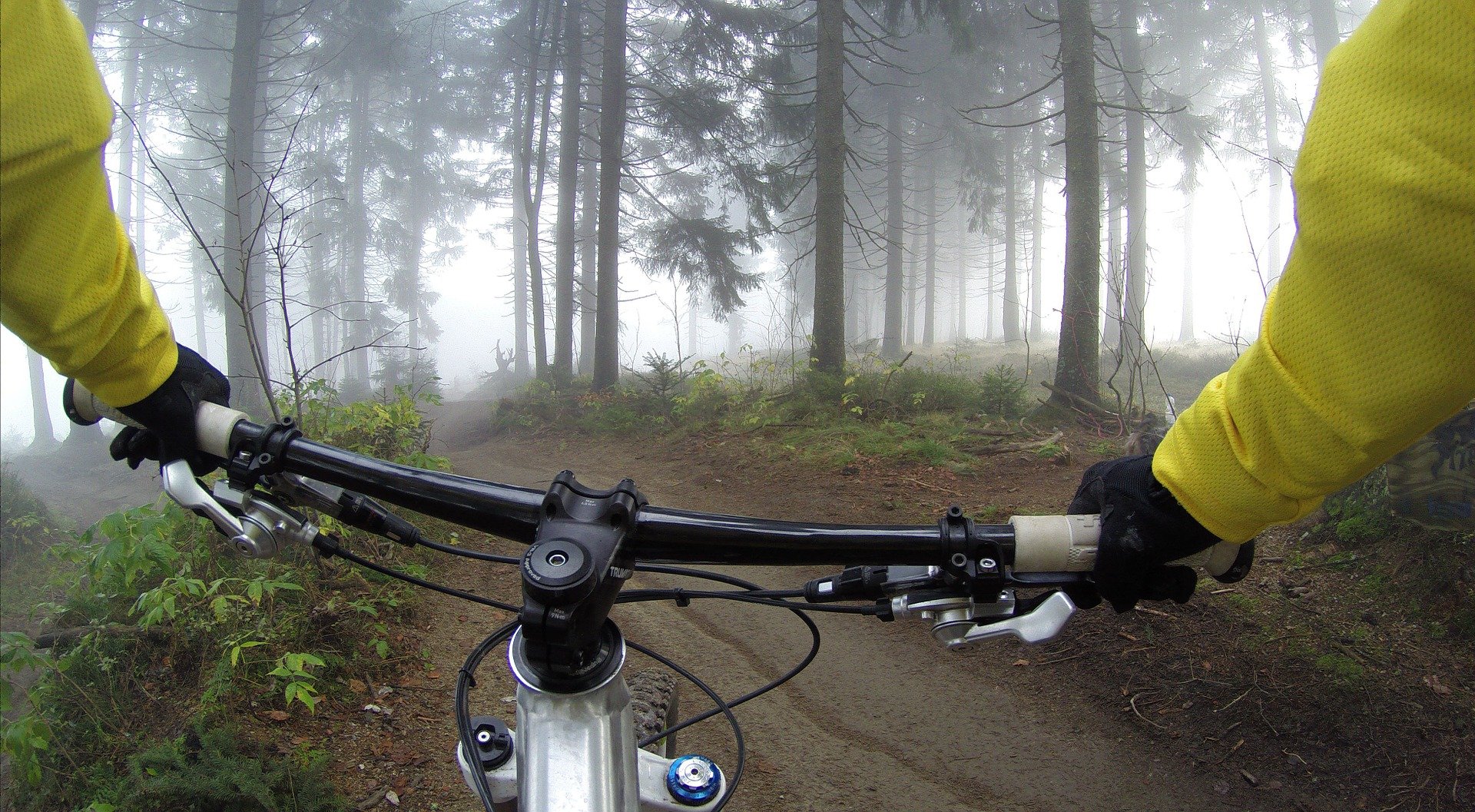Whether it’s wintertime and your after an alternative for cold and wet rides on your road bike, or you want to work on your strength and technique, mountain biking is a great addition to a triathlete’s training program. But what do you need to know and how can you be prepared before hitting the trails? We have eight useful tips to share with you:
1. Don’t sit still, move!
While on a time trial bike you sit as still as possible and aim to hold one position for a long time, whereas on the mountain bike it is important to move. Lean your bike into a turn, stand up on your pedals to regain momentum after a sharp corner, and move back on the saddle when descending. This makes you more agile on your bike and it makes it easier to anticipate bumps when you are on rougher paths – not a concern on a flat piece of tarmac, but definitely useful on trails.
2. Let your bike find its path
Don’t hold onto your handlebars too firmly – let your bike find a path. Especially when you are riding on loose sand. Don’t force your wheels – let them dictate which track they prefer to follow.
3. Sharp corners
Technique is even more important on a mountain bike than on the road. Use your whole body when taking a turn and change gears ahead of time. Your technique will quickly improve with more time on the trails. And, with a mountain bike sharp corners make for faster rides!
4. Shifting gears
On the road you might get away with slow gear shifting, but on the mountain bike you can quickly lose momentum – or even come to a complete stand still – if you don’t change gears quickly enough. Before a hill, make sure to shift to a low (easier) gear and do so before your drivetrain is under load. After a sharp corner or climb, quickly move back to high (harder) gear so that you can get back up to speed.
5. Look well ahead
Since mountain bike trails generally have a lot of turns, hills and obstacles, it is important to be well-prepared and know what is coming up. You need to look ahead so you have time to change gears or to figure out how you can avoid, for example, a tree trunk. It also helps to face the exit when you’re making a corner.
6. Get to know your brakes
The brakes on a mountain bike are usually more sensitive than those on a road bike. So it’s important to know how hard you need to pull the brakes to get to a complete standstill, and how much pressure is needed just to slow down a bit.
7. Use ‘normal’ shoes and don’t clip in
As a beginner it can be helpful to use normal shoes and flat pedals on your first few rides. In case your late switching gears, or you get stuck in loose sand, you can quickly jump of your bike. Of course, eventually you want to ride with clipless pedals. This allows you to ride faster as you generate speed when you push down, but also when you pull up.
8. Find a beginner’s trail
Plan your trip beforehand so that you know what to expect. Some trails are more challenging than others, and most countries have warning signs for rougher terrain. You probably don’t want to end up on a jump during one of your first mountain bike rides, so make sure to find a good beginner’s trail that suits your level.


